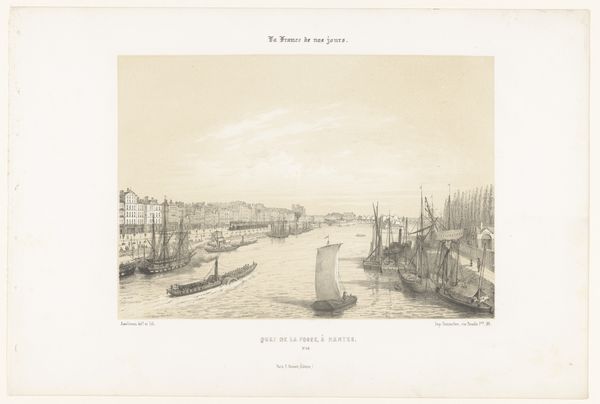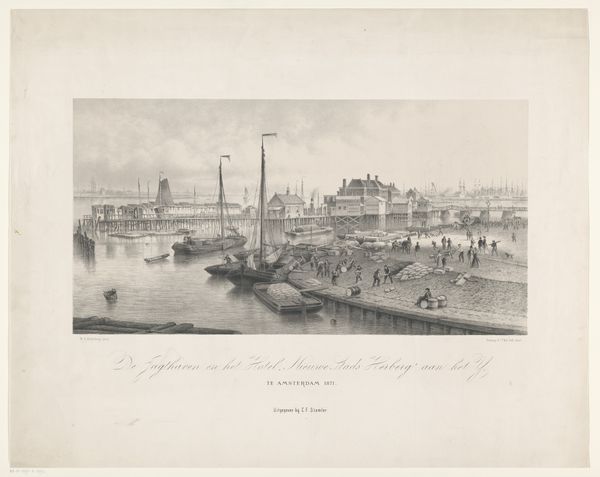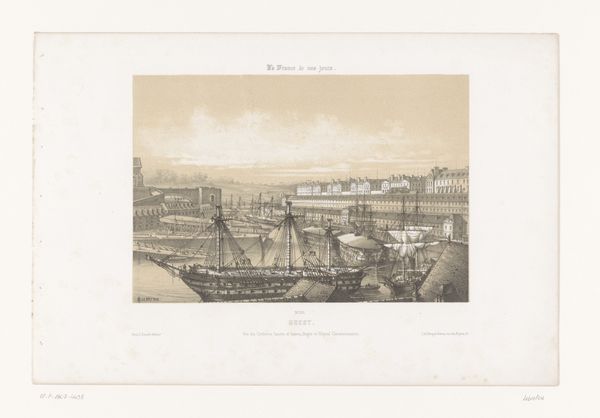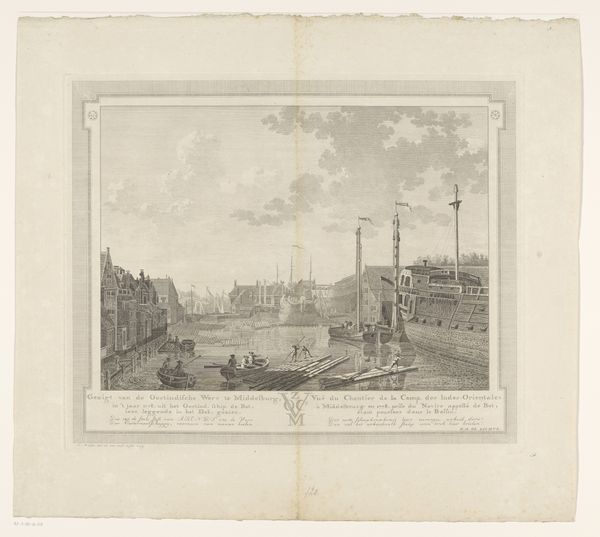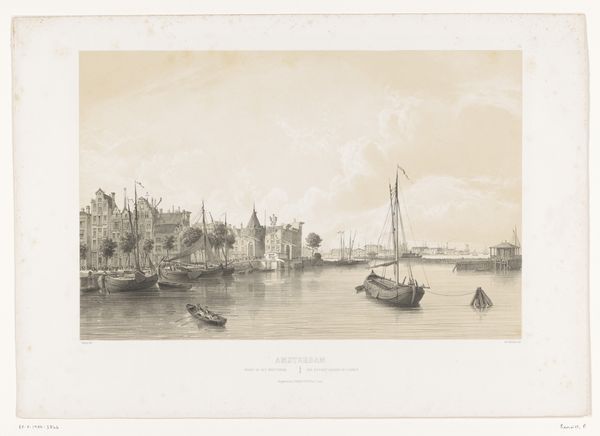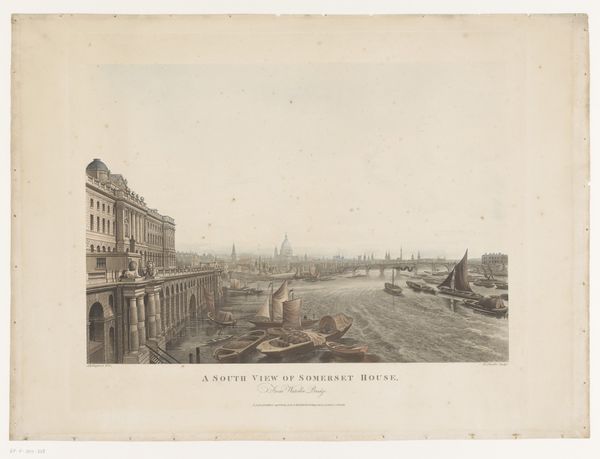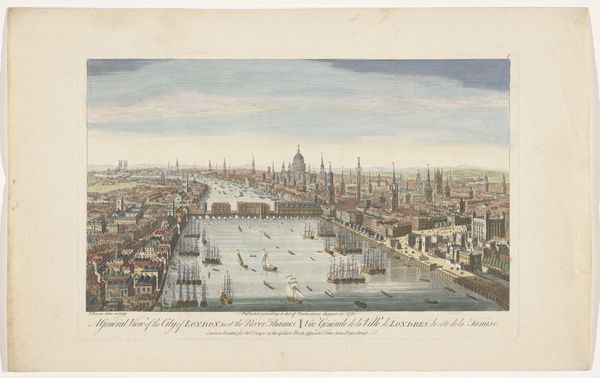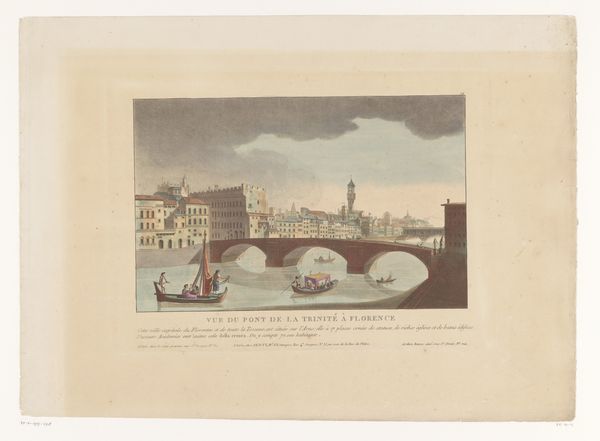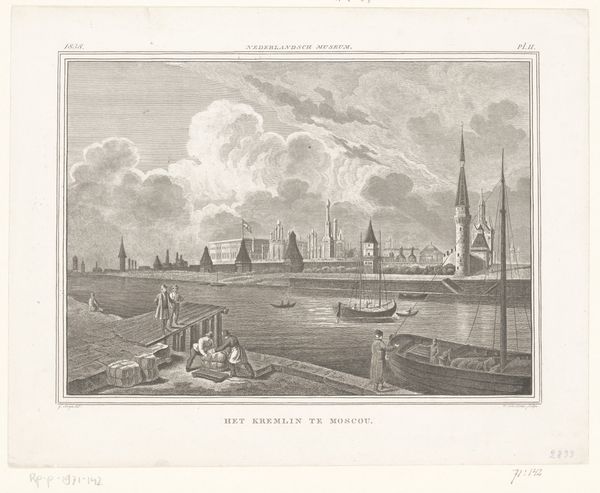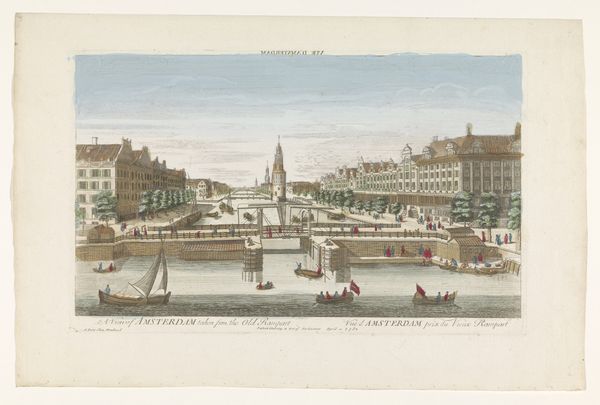
Zicht op de nieuwe brug over de rivier Penfeld in Brest 1863 - 1864
0:00
0:00
leonaugusteasselineau
Rijksmuseum
Dimensions: height 291 mm, width 434 mm
Copyright: Rijks Museum: Open Domain
Editor: This engraving, "View of the New Bridge over the Penfeld River in Brest," by Léon Auguste Asselineau, dating from 1863-1864, depicts a bustling cityscape with impressive ships and a new bridge dominating the view. The detail is amazing! How do you interpret this work, especially considering the historical context? Curator: What I see is a deliberate assertion of modernity and industrial progress, fraught with potential for social division. The bridge itself becomes a symbol – who benefits from its construction, and whose lives are disrupted? This isn't just a pretty cityscape; it's a snapshot of 19th-century urban development, inherently tied to power, capital, and labor. Consider who is given access, represented in the foreground as passive observers of the active port workers: this scene constructs access around labor. Editor: That's interesting. I hadn’t considered it from the perspective of labor and social class. The figures do seem separate from the industry surrounding them. Does the rise of Realism, as a movement, play into that? Curator: Absolutely. Realism, in this context, can be viewed as an attempt to portray the unvarnished truth of the era. But even 'truth' is subjective. Whose reality are we seeing? Asselineau focuses on the spectacle of progress, perhaps overshadowing the impact of such changes on the working class, and also possibly occluding women from the main narratives represented. This artwork inadvertently invites a critical examination of the promises and consequences of industrialization and its effects across various groups. Editor: So, while seemingly objective, the artist's choices still reflect a particular viewpoint, or a political framing, intentionally or not. Curator: Precisely. By analyzing these choices, we can excavate the underlying narratives of the era and start crucial conversations on how we can use what art is and what it represents to impact what art can be. Editor: I never thought about it that way. Now, looking at the piece again, I see the bridge as so much more than just a bridge. Curator: And that’s precisely how art history intersects with our current understanding of power, privilege, and progress.
Comments
No comments
Be the first to comment and join the conversation on the ultimate creative platform.

